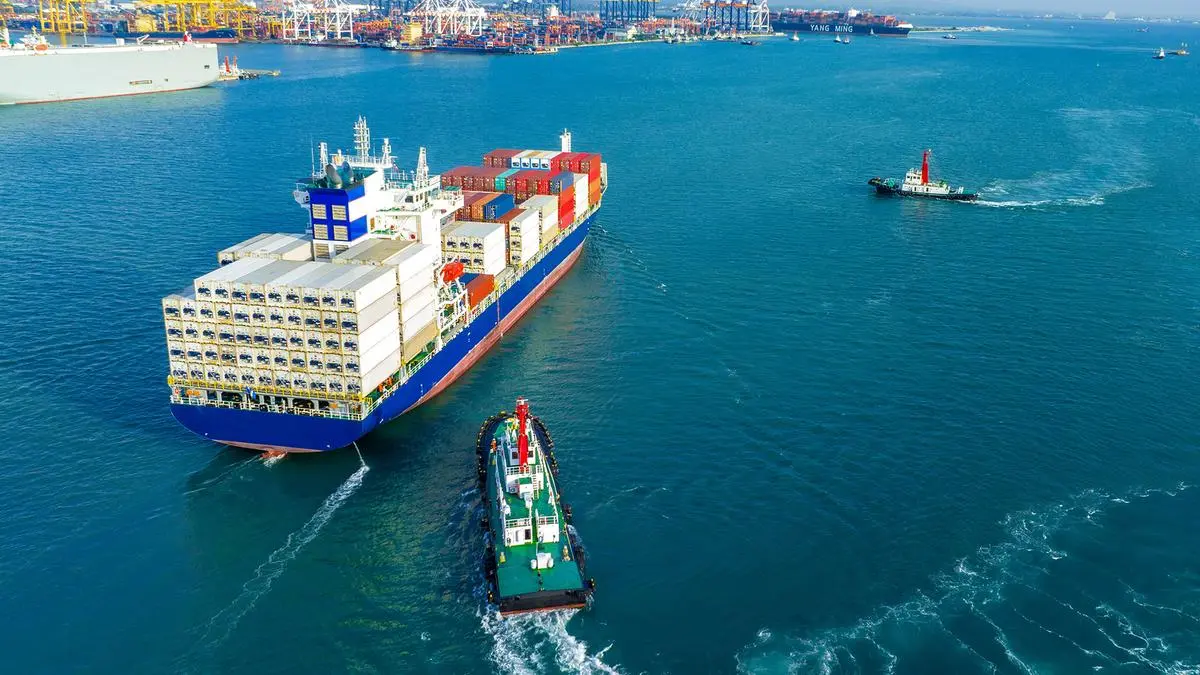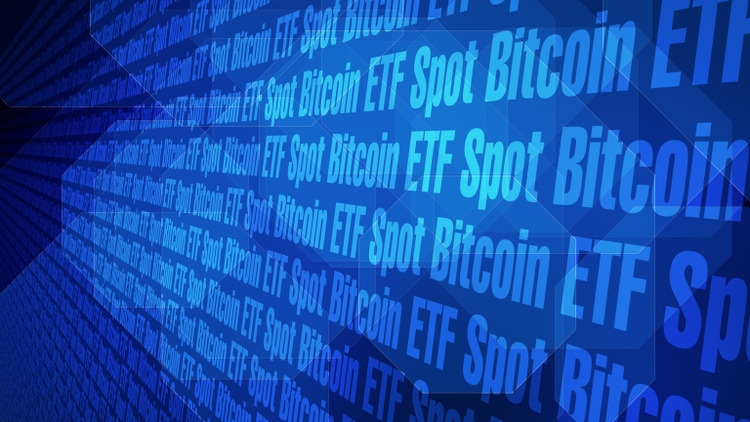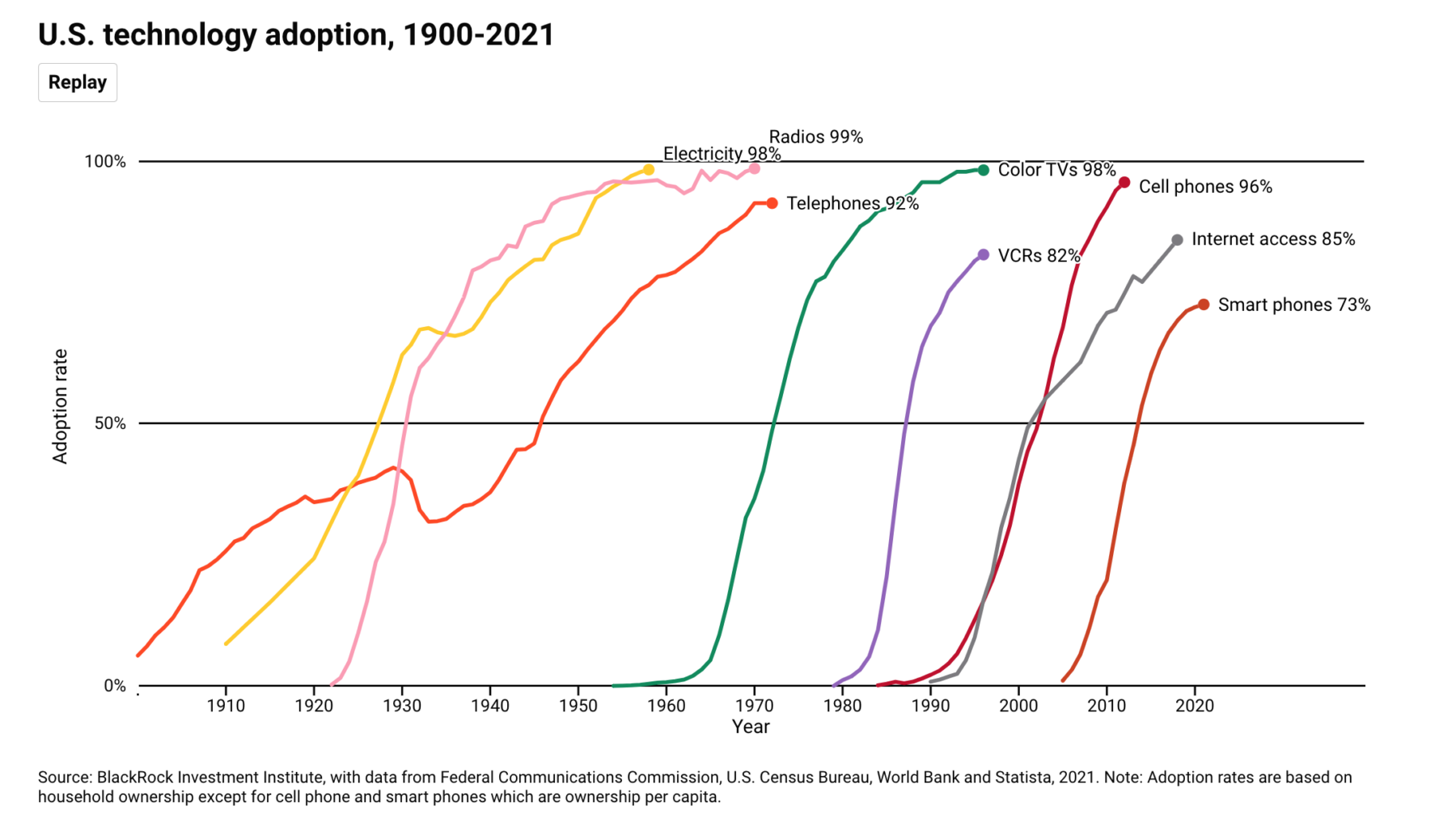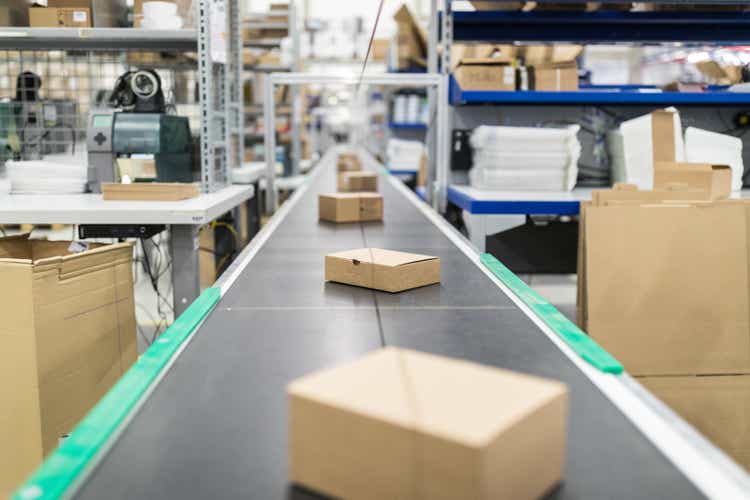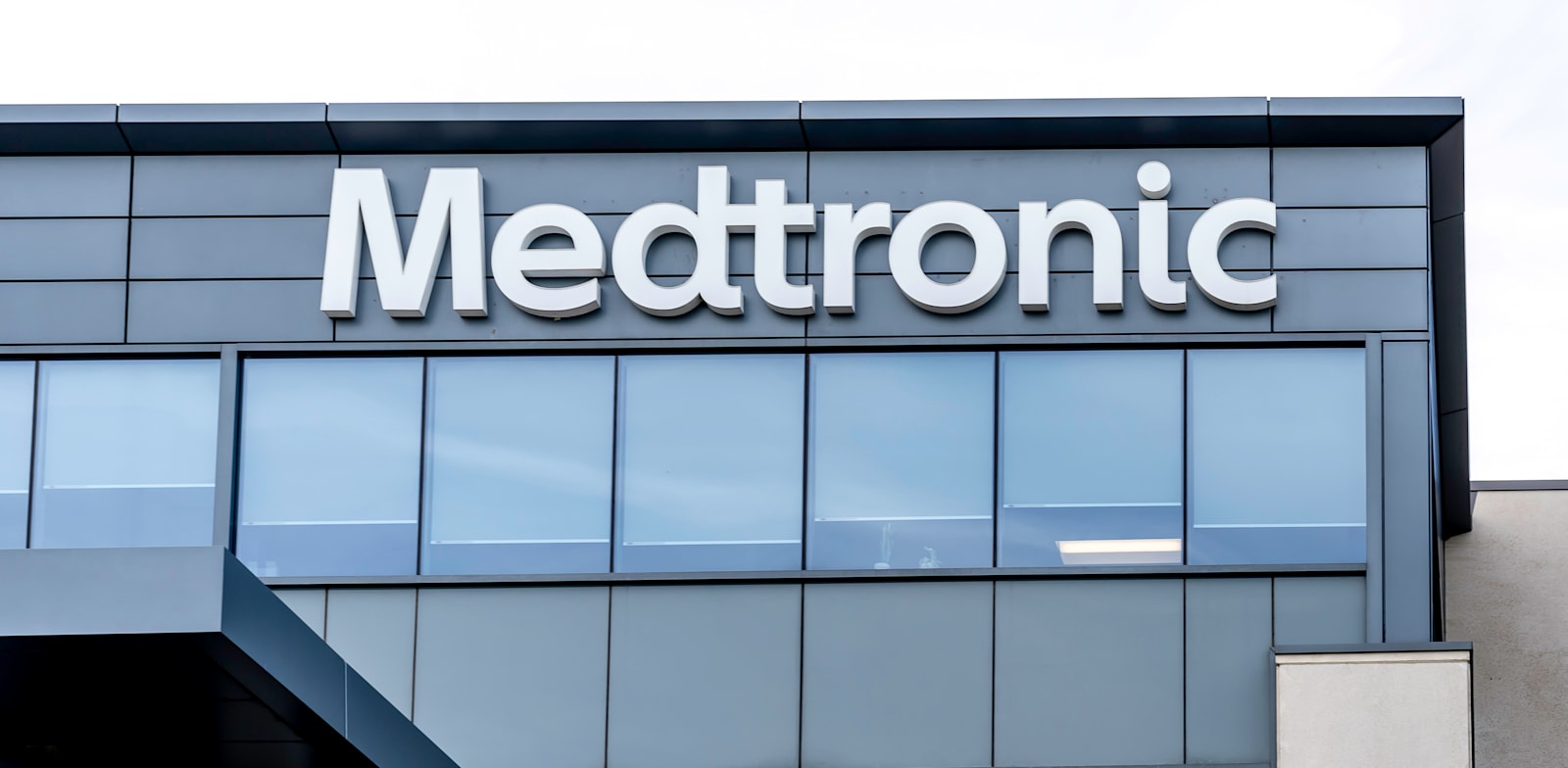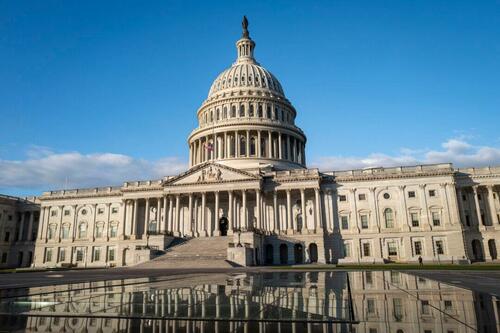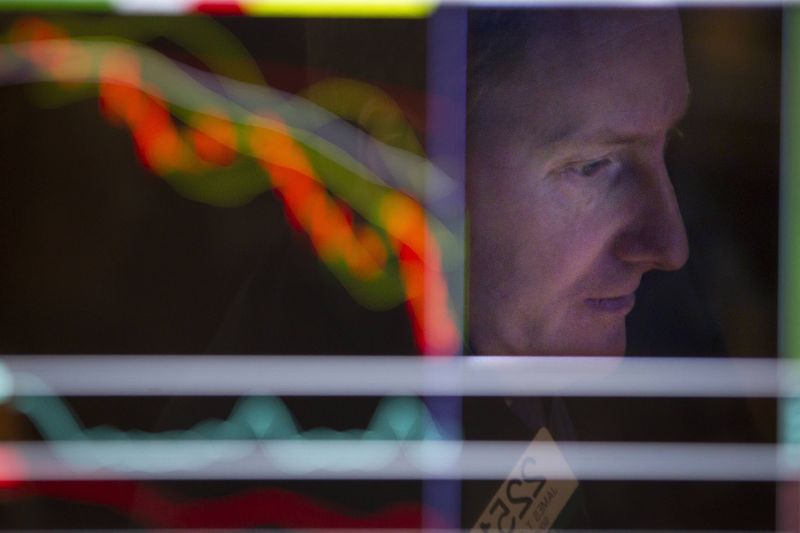Veolia Environnement S.A. (OTCPK:VEOEY) Q4 2023 Results Conference Call February 29, 2024 2:00 AM ET
Company Participants
Estelle Brachlianoff – Chief Executive Officer
Claude Laruelle – Chief Financial Officer
Conference Call Participants
Arthur Sitbon – Morgan Stanley
Alexandre Roncier – Bank of America
Olly Jeffery – Deutsche Bank
Juan Rodriguez – Kepler
Estelle Brachlianoff
Good morning, ladies and gentlemen. Thank you for joining us for this conference call to present Veolia’s 2023 results. As it will be followed by a presentation of our 2024-2027 strategic program, GreenUp, which begins at 10 am. Please focus your question on the results and our objective for 2024. And I’m accompanied by Claude Laruelle, our Chief Financial Officer.
So back to the ’23 results, and I’m on Page 3. Our 2023 results are once again very strong, exceeding our annual targets and enable us to approach 2024 with confidence. Those results are the fruit of our unique positioning in the buoyant ecological transition market, but also of our resilience and capacity to adapt. On the one hand, demand for our services have never been so high. We saw example of full and fast growing order book for our Water Technologies activities, a sign that water scarcity and quality have become central issues for both cities and industries, which is one of the first consequence of climate change.
In 2023, Veolia’s revenue rose by 9% to €45 billion or plus 4.4%, excluding energy price, which are passed through for us. On the other hand, we have not relaxed our efficiency and cost-cutting efforts with €383 million delivered, complemented by sales cost synergies totaling €315 million, well ahead of our targets. This effort enabled us to achieve strong EBITDA growth of 7.8% on a like-for-like basis, above our guidance range. These excellent results proved once again that Veolia’s performance is largely uncorrelated with the macroeconomic context.
As quarter-after-quarter, we have consistently delivered growing results, while waste volumes have remained flat since September 2022. Overall, 2023 was the seventh consecutive year of earnings growth, excluding those 2 quarters of COVID. During this period, Veolia will have absorbed a series of major economics, sanitary, geopotical and energy shocks. In 2023, in particular, we will have demonstrated Veolia’s ability to grow earnings in a subdued macroeconomic context, marked by high inflation, which we have perfectly absorbed by indexation and our pricing power.
This excellent performance is enabled us to grow EBIT by 13.7% and current net income by 14.9% to €1.335 billion, which is an all-time high for Veolia. And doubling compared to 2018. Free cash flow generation was sharply to €1.143 billion, enabling us to reduce debt to less than €18 billion and leverage to 2.7x and to return to an after-tax ROCE of over 8%.
Here again, we are ahead of schedule, less than 2 years after the acquisition of Suez. All this means that we start 2024 with confidence. We are targeting an EBITDA growth of plus 5% to 6% and a current net income above €1.5 billion, which means more double-digit growth. As a sign of our confidence, the proposed dividend is up 12% to €1.25 per share. This past year was the final year of the Impact 2023 strategic plan.
Of our 19 financial and nonfinancial targets, 17 were met or exceeded, including all our financial targets. I’ll come back to this in a moment. On Page 4, you’ll find more details on our full year results, which closed with detail later. Overall, the trends of the first 9 months continued in the first quarter. Starting with revenue, sales were up plus 9% and plus 4.4%, excluding energy prices. We recorded strong growth in all our activities in water, energy and waste.
Water sales rose by plus 7.5% to €18.4 billion, driven by a record year for Water Technologies, particularly for industrial customers in North America and Asia. This activity alone grew by 12.1% and bookings of €5.3 billion were up 13%. In our municipal water business, sales momentum continued at a good pace in parallel with the indexation of our contracts.
The waste business grew by plus 3.4% to €14.7 billion and by 5.9%, excluding the impact of price of recyclates. Here again, the good sales momentum continued as did price increases on indexation with overall flat volumes. Last but not least, Energy registered very strong growth, up 19.9% to €12.3 billion, mainly thanks to increased energy prices, but also the development of our energy efficiency and electrical flexibility activities.
Growth returned to a normal level in the fourth quarter. EBITDA growth reached plus 7.8%, above the high end of our EBITDA guidance, thanks to synergies and efficiency gains exceeding our no targets. Current EBIT rose by plus 13.7%, thanks to continued strong operating leverage. And current net income rose sharply by 14.9% to €1.335 billion, again, above our target. This very good result demonstrates the strength of our strategic positioning and choices as well as of our strict management discipline. And let me remind you of the main points summarized in Slide 5.
The benefit from a balanced geographical portfolio footprint with nearly 40% outside Europe as well as from a unique positioning in key fast-growing ecological transformation market. Our business models are solid with 85% of sales not exposed to the economic cycle and protected against inflation, thanks to price indexation formulas and our pricing power. The group is strictly managed as we are maintaining our focus on operational excellence and have achieved excellent results, both in terms of synergies and efficiency gains quarter after quarter, and they are both ahead of schedule.
The target we set ourselves in the Impact 2023 strategic plan have been made and even exceeded, both in terms of our financial and nonfinancial performance. I’d like to come back to each of these points in detail to share with you the elements that enabled us to forecast further solid growth in our results in ’24.
And let’s start with our geographical and business footprint on Slide 6. As you can see, the group is already very international. France only accounts for 21% of sales and 37% already generated outside Europe, including $5 billion in the U.S. The GreenUp plan, which I will present to you at 10 am will further strengthen the group’s international reach. In terms of activities, we generated 41% of our sales in water, 32% in waste and 27% in energy. Although many of our offers to help customers decarbonize or deplete are, in fact, a combination of all those activities.
And I’m on Page 7. The market indeed for ecological transformation in which Veolia has become a world champion offers many opportunities for growth and for a long time to come. And I’m not just talking about carbon because our activities are just as much about managing water resources as they are by treating pollution to ensure the health of population and ecosystems. The group commercial momentum accelerated significantly in 2023 under the dual effect of the synergies of the merger with Suez in our offerings and the growing awareness of the reality of the consequences of climate change on the increasing scarcity of water resources in particular. And here are a few examples to illustrate our commercial momentum in 2023, which will continue in ’24 and beyond.
To start with depollution, Hazardous Waste in the U.S. enjoyed another year of solid growth in ’23 with sales up plus 7% and EBITDA up 40%. Our treatment assets are operating at full capacity, enabling us to pursue our policy of price increases, but also to be highly selective on our mix. We have continued to strengthen our network with the acquisition of the USIT asset in Michigan in Q4, and we are pursuing the construction of a new incinerator in Gum Springs, Arkansas, which will significantly increase our treatment capacity.
On Slide 8, we’re talking about regeneration of resources and notably the vessel resource, which is so important to our daily lives but it’s but it’s also for industrial processes. We have booked 3 good orders in ’23 in our Water Technologies division, where we are the world leader. And this order book now totals €5.3 billion, up 13% versus 2022. Our portfolio of technologies, including reverse osmosis, ultrafiltration membranes, evaporation-crystallization technologies, biological treatment and desalination is quite unique indeed.
And their combination enables us to considerably reduce our industrial customers water consumption to treat the pollution of their affluence and even to extract valuable minerals from them. We take just one example in seawater desalination. We won a €300 million contract to build one of the world’s largest desal plant in Abu Dhabi in ’23 and one of the most energy efficienct. I could also detail our contract with lithium producers to produce ultrapure water for semiconductor plants in Asia and North America. As you can see, we are very confident for this business growth in ’24, most of which has already been secured.
Finally, on Slide 9, decarbonation, our energy activities have had an exceptional year. Our revenue benefited, of course, directly from the raising energy price, which are essentially passed through for Veolia. But above all, we developed new decarbonizing local energy services that are here to stay. For example, we commissioned the new biomass plant in Braunschweig, Germany, the first enough plant to save our coal in Europe, soon to be followed by [indiscernible] in the Czech Republic.
We connected a number of new customers to our heat distribution network and started operation in Tashkent, Uzbekistan. Began production of energy from solar panels installed on the Ockendon landfill site in the U.K., the second largest in the country. PPPs in Italy with our hospitals and public buildings have borne fruit. And our power grid support services known as flexibility, have been great in demand throughout Europe.
For 2024, although we anticipate lower revenue due to lower energy price, our EBITDA should stabilize at a high level. In heat, The large part of the EBITDA growth in ’23 is recurring. While the increases in heat tariff granted in Central and Eastern Europe at the end of ’23, with a slight delay, as you know, should offset in ’24 the full energy prices. Because of COVID and the start of the war in Ukraine, 2023 once again demonstrated the group resilience even in a complex economic environment, marking ’23 by subdued macroeconomic context, high inflation and high interest rates.
And I’m on Slide 10. You will see that first illustration of that are now very low exposure to macroeconomic trends. We have increased our EBITDA by 7.8% in ’23 after 7.2% in ’22, even though waste volumes have remained flat since September 2022, as you can see on the graph on the left of the slide. Second illustration with inflation 70% of our portfolio is automatically indexed. And for the other 30%, we have once again demonstrated in 2023 after ’22, our ability to raise prices and pass on our cost increases, notably thanks to our positioning in each country in which we operate. On the right, you can see some examples of the price rises achieved in ’23 in our various businesses, some of which will continue in 2024.
Slide 11 and 12 illustrate our strict discipline in terms of cost and operational efficiency, which is continuing at a very strong result, and we’ll continue on the GreenUp plants. We are constantly striving to maintain a level of operational excellence that leads us to adopt all the new tools available. In ’23, for instance, more than 10% of our operational efficiency were enabled by digital.
And we are now innovating with the inclusion of Generative AI, for instance, in an upgrade, real-time tracking tool in energy, just to give you one example. In terms of efficiency, we achieved €389 million in gains, above on a target of €350 million. In terms of cost synergies, we’ve achieved for the merger with Suez, €168 million in 2023 alone, which means a cumulative total of €315 million since the start of the merger with Suez, above our target, which was by the end of 2023.
I fully confirm our total target of €500 million in cumulative cost savings following the margin, which is also bearing fruit at a steady pace in our commercial offerings, as I just illustrated earlier. Slide 13, I’d like to take a quick look back at the results of the Impact ’23 strategic program, sound, as you know, at the end of February 2020. In an unprecedented, geopolitical, macroeconomic and health context, Veolia has kept up the pace, meeting or exceeding virtually all the objectives we set ourselves. For me, clear choices and the ability to adapt are the keys to the success.
On the 19 financial and nonfinancial targets circa 17 were achieved, including all the financial targets. You’ll find details in the appendix to the document, but allow me to highlight a few of them.
And I’m on Slide 14. Regarding environmental performance, a few key successes. By 2023, our activities will have saved 300 million cubic meters of water and removed 15.4 million tons of carbon from our customers’ trajectory, what I call Scope 4. That’s a considerable amount. We have also rolled out our program to phase out [indiscernible] by 2030, which already a third of it has been made of the investment with €529 million already invested. Investments had a return on capital of over 10%.
On the commercial side, our Net Promoter Score with our customers reached 53 well above our targets. Growth in Hazardous waste once again exceeded our target with sales rising from €2.5 billion to €4.15 billion in 4 years. As far as Veolia employees are concerned, I’m very proud of the 89% commitment rate, measured by an external survey institute among our 220,000 employees.
As a sign of our employee support, employee shareholding has risen even further, reaching 7.5% today, making employees the group’s largest shareholder. The financial targets of Impact 2023 have all been exceeded. And I would like to point out that they would have been achieved even if we had not acquired Suez, an acquisition that is already creating a great value for the group through cost synergies, of course, but beyond that in our combined strength and commercial momentum.
To focus a few figures. The group’s current net income has doubled between 2018 and 2023 to an all-time high. What’s more, less than 2 years after the acquisition of Suez, we are ahead of schedule with a leverage of 2.7x at the end of ’23 and a ROCE of 8.3% back to pre-COVID levels.
Let’s now look ahead to 2024. From the examples I have given, you can see that we have good visibility and confidence in earnings growth in 2024. In terms of business growth, commercial gains of 23, contract renewals and the exceptional order book for water technologies give us good visibility. Of course, the low energy price will mechanically translate into a reduction in our sales.
But as I said earlier, the margin level of our energy activity should stabilize at a high level. As far as prices are concerned, while inflation is falling, the price indexation acquired in ’23 was a slight delay will enable us to cover cost increase in ’24 and thus, preserve our margins.
Naturally, we are continuing our efforts to achieve operational efficiency and synergies at a steady pace. All these factors enable us to target for 2024 a solid revenue growth, excluding energy prices, an organic EBITDA growth of between 5% and 6% growth. Current net income above €1.5 billion, leverage of less than 3x and a dividend growth in line with current net income growth, very, very confident for ’24.
I’ll now hand over to Claude who will discuss the 2023 results.
Claude Laruelle
Thank you, Estelle, and good morning, ladies and gentlemen. I’m on Slide 19. And as Estelle already highlighted, our 2022 results are remarkable and above the year’s guidance. With €45.3 billion revenue, we experienced a very strong organic revenue growth of 9%, driven in all our businesses by good commercial momentum and resilient waste volumes, increase indexation on our long-term contracts and the full impact of price increases on nonindexed businesses.
Even adjusted for energy price increase, our revenue grew by a very strong 4.4%. EBITDA is significantly up at €6.543 billion, an outstanding plus 7.8% at constant scope and ForEx above our guidance for the year. Thanks to the operating leverage, current EBIT is growing faster at €3.346 billion and is up 13.7%. And our current net income increased even faster to €1.335 billion, up 15%. This level is above our objective of around €1.3 billion. This shows the strength of our business model, highly resilient delivering results quarter after quarter, despite flat volume since September 2022.
Net free cash flow improved significantly to €1.143 billion, thanks to working capital reduction due to strict cash collection discipline and lower nonrecurring charges. Free cash flow generation was 11% higher than in 2022. Therefore, net financial debt decreased to €17.9 billion, well below our €18.5 billion objective and our leverage ratio decreased to 2.74x. You can also see on the slide the detailed ForEx impact, which were negative and more significant in Q4. As a reminder, as we operate in local currency, ForEx impacts are only translation and not transaction impact.
Moving to Slide 20. You can see the quarterly growth of revenue by business as well as EBITDA for Q4. Our revenue growth, excluding energy price impact and EBITDA growth remained solid and better than in Q3. In Q4, we registered a revenue growth of 4.7% at constant scope and ForEx. Excluding energy prices, organic growth was 4%, which is in line with the full year. EBITDA registered a very strong growth of 8.2% in Q4, thanks to good operating leverage with €60 million of net efficiencies and synergies in the quarter.
Let’s see by activity, and we continue to register solid growth in our 3 activities. Water grew by 8.4%, driven by indexation and technologies, operations were up 5.5%, and Water Tech was sharply by 20% with new large projects under execution. Waste activities continue to grow by 4.3% better than in the previous quarter, thanks to good pricing and lower impact of recyclate prices. Volumes remained stable.
Finally, energy activity increased by 0.5% and 3.6% excluding weather in Q4, growth normalized due to a higher comparison basis of energy prices. We expect these Q4 trends to continue in 2022, with solid growth in water driven by indexation and as Estelle told you in Spain and in a very strong growth of Water Tech fueled by the record booking registered in 2023. Waste should continue to be driven mostly by pricing. Finally, we expect Energy EBITDA to stabilize at a high level in 2024.
I’m on Slide 21, and you have the revenue breakdown by segment. I will detail the business trends in the slide by activity a little bit later. As you can see, growth came from all our international geography, more or less at the same pace, above 10%, which is very good. And in France, we had at 1.4%. On Slide 22, you have the EBITDA evolution by segment.
Water Technologies registered an outstanding EBITDA growth of 17%, thanks to 12% revenue growth, operational efficiencies and synergies. Rest of the World, EBITDA was up 7.1%, notably in North America, Africa, Middle East and Pacific. In Western Europe, EBITDA was up 13.7%. France and Hazardous Waste Europe, EBITDA was down by 5.2%. French Water was impacted by adverse weather during the summer and the end of the Lyon contract. And our French waste activity suffered from low recyclate prices. We expect France to strongly rebound in 2024. On the next 3 slides, we detailed our performance as usual by activity, water, waste and energy. And we start by water, our largest activity.
I’m on Page 23. Our water business experienced a solid organic growth of 7.5% to €18.4 billion. In France, higher indexation of 6.2% were partly offset by the end of the Lyon contract and lower volumes due to adverse weather. In Central Europe, revenue was up 16.4%, driven by increased tariff indexation and strong growth works activities. In Spain, revenue increased by 8.3%, driven by tariff increase and strong works activities as well with flattish volumes. U.S. Water progressed by 5.7%, thanks to tariff indexation with a slightly lower summer volumes. LatAm revenue increased by 6.8% with both volumes and tariff force. Our Water Technology business performed very well, growing by 12.1% and its backlog increased by 13%, which will fuel 2024 growth.
On Slide 24, you have the main trends of the waste activities. Our waste activities performed well despite flat volumes and low recycled prices. We have delivered this strong performance, thanks to our pricing discipline and indexation in municipal business, contract selectivity, operational excellence and an improved mix in hazardous waste in the U.S. Revenue grew by 3.4% like-for-like to 14.7 billion. Excluding recycled price impact, revenue grew by a solid 5.9%. The scope effect is minus 6.2% is significant. If you remember, it’s due to the antitrust disposal made in 2022.
The growth came mainly — the growth of the business from pricing, complemented by resilient volumes and partially offset by the negative impact of lower recycled prices. No significant change compared to Q3, with volumes and commerce stable, solid pricing and a plus 5.2% impact and lower recyclate prices. In Q4, recyclate prices stabilized compared to last year after several quarters of decrease. Hazardous waste remain well-oriented, notably in North America.
I’m on Slide 25, and you have the details of our energy business. 2023, as Estelle said, was a very good year for energy. Revenue was sharply boosted by energy prices, which also contributed partly to EBITDA. Thanks to our business models and our hedging policy, we have been able to absorb the volatility and protect our results. Energy revenue was €12.3 billion, up 19.9% like-for-like and EBITDA grew by 30%, whether it was unfavorable due to a mild winter in Central Europe with an impact of minus 1.5%. Our business models allow us to pass the cost of energy increase to our clients. Over the last 18 months, we benefited from progressive heat price increases by the regulator in Central Europe, which will continue in 2024 as there is a lag effect.
On the electricity side, we benefited from the price volatility and increase our ancillary services to the grid. We also started new biomass high-efficiency cogeneration with higher EBITDA. Finally, our hedging policy enables us to mitigate the market price evolution. Electricity revenue is already largely hedged for 2024 as well as our energy purchase. Our visibility is, therefore, very strong.
I’m on Slide 26. And you have our usual revenue bridge detailing the different effects. Forex had negative impact, minus 2.8%, and scope impact is very limited, minus 0.5%. The 9% organic growth is fueled by good commercial momentum, volume growth, strong work activity, notably in Water Technologies, price and indexation increase in waste and water and energy prices sharply up.
To take a few examples on the production side. The Gold Coast waste contract in Australia started in Q1, the ADNOC hazardous waste project during the summer in Abu Dhabi and many new contracts were signed in C&I waste in the U.K. and also in Building Energy Services in the Middle East. The weather impact was slightly unfavorable, minus 0.5%. The contribution of price increases in water and waste was plus 4.1%, with tariff indexation on municipal contracts and strong discipline on pricing for industrial customers, thanks to our leadership position. Energy prices contributed for almost €2 billion or 4.6%. It was partly offset by lower recycled prices for minus €0.4 billion or minus 0.9%. Organic revenue growth, excluding energy prices reached 4.4% in 2023.
The strong revenue growth translated into a remarkable 7.8% EBITDA organic growth above the annual guidance range. Scope was not significant. ForEx negative impact reached minus €133 million. EBITDA organic growth was fueled by the following topics, volumes and commerce impact was well oriented, plus 1.9%, and we had partly offset by weather impact of minus 1.3%. As usual, the main contributor to our EBITDA increase is the net efficiency and synergies for 4.7%. The gross efficiency gains reached €389 million, net of shared efficiency with clients and contract renegotiation, net efficiencies amounted to €122 million.
The synergy delivery was also very good, reaching €168 million ahead of our annual target. In total, synergies and net efficiencies contributed to €290 million. Energy and recycled impact was €160 million. The favorable energy price impact was €248 million, of which around 3/4 are recurring, including the positive impact of the catch-up of feed prices in Central Europe, which will continue in 2024. Besides the EBITDA of energy benefits from the decarbonation CapEx plan, the new biomass facility in Germany generates higher EBITDA, thanks to CO2 quota savings and higher efficiencies and subsidies.
Additional new cogeneration replacing the old coal fire ones will continue to fuel our EBITDA going forward. Also, as we highlighted during the energy deep dive, more volatile electricity markets enables us to develop our ancillary services to the grid. Let’s see now how the EBITDA increase is fueling the current EBIT, which is growing very strongly by 13.7% to €3.346 billion. Renewal expenses at €303 million were comparable with 2022, sorry. Amortization and OFA amounted to €3.060 billion, slightly up. Industrial capital gains net or provision and asset impairment reached €43 million compared to €68 million last year. JVs amount to €123 million compared to €127 million, a few divestments offsetting the underlying growth.
Let’s move now on Page 29 to the current net income. In 2023, the current net income group share was up by 15% to €1.335 billion, which is above our target of around €1.3 billion. The cost of the net financial debt, €626 million is lower than in 2022, thanks to our efforts on cash management, increased returns from cash balances and €30 million of favorable one-offs. As a reminder, 87% of our debt is at fixed rate. The improvement of the other financial income and expense at €350 million is due to lower cost of inflation-linked bonds in Chile. Capital gains were not significant in 2023. And the income tax rate is at 26.5%. Minorities stood at €446 million due to increased results in Central Europe and in Agua Sandinas, notably from the reduced cost inflation linked bond.
I’m on Page 30. Net income group share increased sharply by 31% to €937 million, mainly thanks to lower trade integration costs and lower restructuring charges. Let’s move to Page 31. Comparing 2022 with 2023, free cash flow improved significantly, thanks to EBITDA increase of €347 million, another improvement in working capital requirement of €195 million, lower restructuring and integration costs while increasing CapEx to €3.7 billion, including our coal exit program in Central Europe and 3 large hazardous waste facilities under construction.
2022 was exceptional with significant antitrust remedies in industrial disposal. Net financial debt improved by €235 million to €17.9 billion, leading to a further decrease in leverage ratio to 2.74x. On Slide 32, you have the details of the net financial debt variation where you can see the different effects I have just mentioned.
I’m on Slide 33. Before detailing the guidance, I just want to remind you that we are closing today the disposal of SADE activity or network construction business. It is a €1.1 billion construction activity with less than 5% EBITDA margin. And as you know, it has always been part of our strategy to reduce construction activities.
After 2 years of being focused on the [indiscernible], we will continuously review our portfolio to identify mature and commoditized activities on nonstrategic assets as we just did [indiscernible]. Coming back to the guidance. We have an ambitious guidance for 2024 for revenue, continued solid organic growth, excluding energy prices, for EBITDA, organic growth between 5% and 6%, more than €350 million of efficiency gains, more than €400 million cumulated synergies at the end of 2024. Current net income above €1.5 billion, which means a double-digit growth compared to 2023 leverage ratio below 3x. And as usual, our dividend will grow in line with our current EPS. Thank you for your attention.
Estelle Brachlianoff
We are now ready for questions.
Question-and-Answer Session
Operator
[Operator Instructions] Your first question comes from the line of Arthur Sitbon from Morgan Stanley.
Arthur Sitbon
I have 2. The first one is on the guidance for organic EBITDA growth in 2024. So in 2023, you delivered 7.8%. 2024, you guide for 5% to 6%. I was wondering if maybe we could have a bit more detail on the component of the organic EBITDA growth for 2024 based on your usual EBITDA bridge chart that you show in your slide. My understanding from what you said so far is that the combination of net efficiency and synergies should be a bit less positive than in 2023?
Then whether I suspect your guidance is based on normal assumptions, so maybe a positive due to normalization? First, is that correct? And what about the building blocks of volumes commerce works and the recyclate and energy prices one? That’s the first question. And the second one is, I was wondering if you could comment on what happened in the capital gains net of impairments line in Q4. It seems to me that there was a negative element impacting Q4 because it was a much more positive item in — as of the 9 months. If you could comment on that, that would be helpful.
Estelle Brachlianoff
Thank you, Mr. Sitbon. I will start with the first question and Claude will answer the second. In terms of the guidance for the year, I won’t give you the full detail of how we will deliver it because we’ll give you, obviously, the bridge throughout the year when we deliver good results. But I can give you the rationale behind. So first things first, 5% to 6% is a sign of very good confidence, I would say, whatever the macroeconomic context, this is what we will deliver in 2024.
In terms of the pluses and minuses, we will go on with efficiency, not slowing down here. We will go on with delivering synergies at a very, very good pace. And it’s fair to say that the pace we anticipate in ’24 is slightly lower than ’23. In a way, we’ve taken a little bit of advance in the synergies in ’23, and we will go on delivering. But the advance we’ve taken in ’23, we won’t have it again in a way in ’24. And the last effect is really a little bit of opportunistic gain we’ve had from electricity price in the flexibility market.
So basically, on the positive EBITDA increase in energy, I would say roughly 80% would be recurring. The rest will be more like opportunistic effect of electricity, which we won’t have back in ’24. On the opposite, we are around, we will have a positive effect of the tariff increase we were granted in heat in ’23 — late ’23, which means altogether, we anticipate to stabilize at a very high level, our global margin of energy, which is a very, I guess, a sign of confidence based on having secured all the building blocks of that. I guess, tariff increase, as I just said, and hedging policy. So very confident for the year 2024, and that’s what explains the 5% to 6% guidance range.
Claude Laruelle
Regarding the details on EBIT and industrial capital gains, net of provision and asset impairment as we had less disposal or industrial disposal, we had less gain on industrial deposals, less net capital gains. We and on provision and impairment, as you remember, we had French — the new French law on pension. So we had a little bit better on employee benefit. We’ve talked about this already in Q3 for around €20 million and was also the renegotiation here at the Veolia level of the pension in France. And we had a little bit more impairment of something like €40 million in different geographies, but nothing very material at group level. And with the math you can do, we had less gain on industrial disposal and a little bit more provision and impairment leading to a slight decrease at this line from €68 million last year to €43 million this year.
Operator
Your next question comes from the line of Alexandre Roncier from Bank of America.
Alexandre Roncier
Just a quick one, please. I’m just wondering what kind of impact you’ve seen on energy in Q4 for [indiscernible], given the relatively like mild winter and how much we should expect in Q1 as it seems temperature have not remained quite as low as the forecast would have previously seen. And therefore, how much incremental you think, given the increased heating tariffs at the back end of 2023 and potentially normalization of, I would say, winter condition into 2024 and 2025, which you see in terms of the bridge for EBITDA.
Estelle Brachlianoff
I will let Claude answer the details on the Q4, Q1 part of the question. But overall, again, we anticipate stabilizing at a very high level of our margin — EBITDA margin, I mean, of the energy business. On the [indiscernible] side, we have developed a lot of things in ’23, which will be recurring in ’24. A little bit of the one-off of ’23 are due to electricity price, which has gone down, yes. But on the opposite way around, we will have a positive effect of the lag effect of the key tariff increase in ’24. So irrespective of the volume which are linked partially with weather, I guess, the tariff lag effect from ’23 to ’24 is positive for the heat sales. And altogether, that means we are very confident we should have a very, very good performance of our energy business in ’24 as much as we’ve had in ’23. But…
Claude Laruelle
And in Q4, the impact was a few dozens of millions of climate because Q4, we had start of the winter, which was mild in Central Europe. And despite this climate effect, we have a strong, very good contribution of the EBITDA. And of course, we take into account in our guidance for the year, the climate effect.
Estelle Brachlianoff
And I guess in addition to that, because we talk about price, we talk about volume. Volume, of course, on heat has something to do with weather, but not only. Just wanted to highlight the fact that we have new connection every year on our network, which is again a recurring trend something which is here to stay because basically, the price even with the increased heat price, the price we offer to the customers are lower than if they were to go [indiscernible]. So the volume of the connection is rising year-on-year.
Operator
Your next question comes from the line of Olly Jeffery from Deutsche Bank.
Olly Jeffery
A couple of questions from me, please. So the first one is just carry on with a focus on energy prices. Of the recurring EBITDA that you said coming into 2024, should we think of that number being recurring into the medium period as well, so means in 2024 and beyond? Or is it just to 2024 and then we need to reassess the impact in ’25.
The second question is on waste volumes. So you spoke about some stabilization within Q4. Could you point to some of the areas where you saw the most negative growth in the year. Have those volumes started to turn in those geographies and become slightly less negative. Any commentary around that would be helpful.
Final question is just a general one around how you see inflation impacting your business in 2024 compared to 2023? Any general comments you can give on that and the impacts on EBITDA from that changing environment would be very helpful.
Estelle Brachlianoff
So a few ones. So — your first question, when I said 80% roughly of it is recurring in ’24 and recurring beyond. So it’s an easy answer. Don’t anticipate that you will go down, it’s here to stay. A good example was the one Claude mentioned in his presentation, which is the Braunschweig plot we invested to exit coal in this plant to replace it by biomass. Biomass helps, and it’s a good return. Biomass is, I guess, subsidized via a kind of feeding tariff, which is here for a very long time. Plus you don’t pay the CO2 price, which again is here to stay. So that’s a good example of what I mean by recurring and what’s in a way behind these comments.
Second one, on the waste volumes, I guess I will answer your questions, but I would like to highlight that the results of Veolia are decorrelated from the waste volumes. So happy to answer your question, but have a look at the track record, we have decorrelated the results from the waste volumes year-on-year and quarter after quarter.
In terms of do we see any change in trends? No. it’s flattish. As it’s depending on the quarter, and you can have a look at our presentation, the quarter is plus 0.1%, another one is minus 0.1% this type. And we don’t see any change in trend in the beginning of ’24 altogether. So flat again in a way, would be the one.
In terms of inflation, do we see inflation showing down, yes, like everybody, I would say. But again, this is a little bit the same as what I’ve just said on the energy price. We have a lag effect. As you know, 70% of our contract base is indexed with the lag effect, which means that in 2024, we will have an indexation formula which are, in a way, more links with inflation of ’23 than ’24, meaning we’ll have a slightly positive effect — of the lag effect into our margin in 2024. I hope I’m making myself clear. So in a way, the lag effect will help us going into 2024, even if the inflation is slowing down.
Operator
Your next question comes from the line of Juan Rodriguez from Kepler.
Juan Rodriguez
I have 2, if I may, or 3 maybe. The first one is on the leverage target that you’re [indiscernible] 3.0 or below the 3.0, which seems conservative after where you finished on 2023. I want to better understand if you include M&A or net or not. As a continuation of that, if you can communicate what is the capital gain from the construction disposal that you’re expecting for the year? .
The second one is on the cost price squeeze dynamics for 2024 after you signal the difference on the prices you expected to slightly past positive or to remain relatively neutral with volumes and price effects.
And the third is, I want to better understand the recent announcement CCGT acquisition that you achieved. First is, is this asset covered by CRM contracts? Or is it more of a spread assets on thermal spreads and the underlying assumption for this — for the acquisition of this CCGT asset?
Estelle Brachlianoff
So 4 questions. The one on the leverage on the guidance for ’24, we said below 3 times, do we anticipate any major M&A? No we don’t, but if there were a good opportunity with a lot of value creation, we would have a look at it. So far, we have demonstrated our ability to deliver the group. And in a way, naturally, we deleverage ourselves by generating free cash flow. Then the choice is to invest if the project is a very interesting one. In terms of the capital gain for SADE…
Claude Laruelle
The capital gains for SADE, yes, will be around €40 million. We had a good price for SADE around the discussion — at the time of the discussion with the group buying SADE. It’s a project that has been longly immature. And so which would be around the €40 million at capital gain for the SADE disposal that will be included in 2024.
Estelle Brachlianoff
In terms of your third question on the price cost squeeze, I guess as usual, because now we have a good track record over the years. We retained between 30% and 50%, so I would say, average [Technical Difficulty] of the efficiency gains in our bottom line. So part of the — we give back to the customer is what you said, but part as well is when you renew contracts, of course, you have to, in a way, really make effort to be even better at what you do. And you have to give back to the customer part of your efforts and then you recreate some room for maneuver during the duration of the contract. So that’s the global logic.
So around 40% and shall I remind you that the synergies or cost synergies only, as you know, of the merger with Suez are 100% returned — retained sorry, in our EBITDA. So say around 40% for our cost efficiency gains and 100% in a way of synergies. In terms of the Uniper acquisition, we announced 2 weeks ago now, it’s a flexibility asset. — flexibility, meaning a type of service, which is absolutely needed when you have more renewables, which is a case in Hungary, therefore more intermittent needs when the grid is typically — super demanded typically between 6 and 8 p.m. during the night.
That’s the type of asset, which is, as you know, one of our key elements of strategy in the energy business for Veolia. I must say we acquired it at a very good price, which means that we are very confident it should deliver a very good value creation for the group.
Operator
There are no further questions at this time. Please continue. Just to let you know, we don’t have any other questions.
Estelle Brachlianoff
So thank you for this conference call. I will encourage you obviously to listen to our presentation of the GreenUp strategic plan for ’24 to ’27, a very ambitious plan. This is from 10 a.m. And again, I hope you’ve felt the smile I have on my face throughout the phone, and I’m very confident we should deliver another very good year in 2024. Thank you very much.



